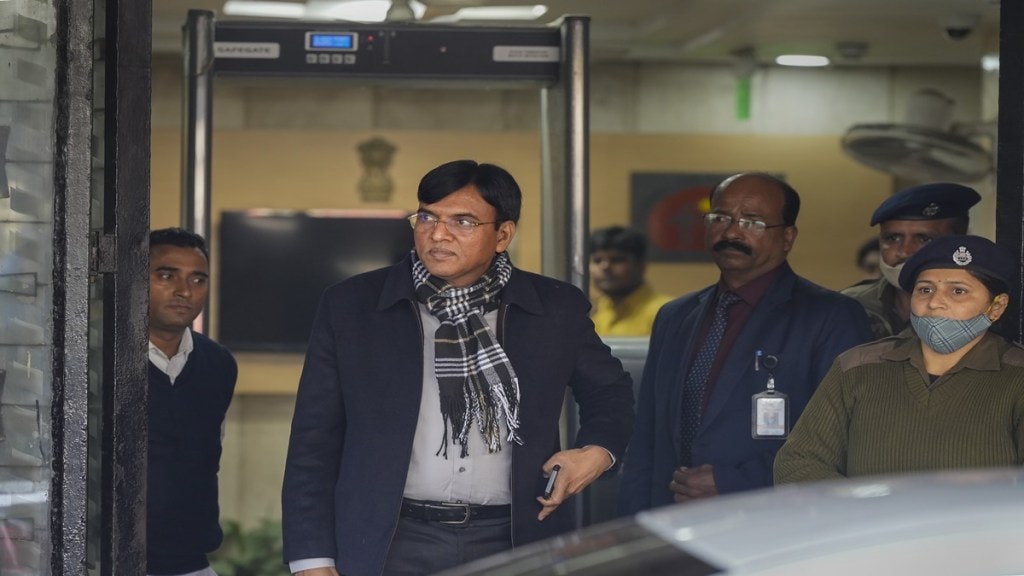Indian airports are brimming with plane-loads of business bosses and holiday travellers. The big fat Indian weddings are getting grander if not more garish by the day. Hotels and malls are bursting with few willing to scupper any plans to meet, mingle or shop. It is little surprise therefore that despite manufacturing taking a hit, the latest GDP numbers for the second quarter of the year showed a 14.7 per cent growth for trade, hotels, transport, communications and services. But while heightened commerce and gatherings that are dense, in every sense of the word, are good for the economy, there could be hidden concerns for those who have elderly folks or those with low immunity back home especially in a world that is still coping with COVID.
Now, with almost everybody and his uncle on WhatsApp displaying a note put out on Tuesday, December 20 th , in the name of Rajesh Bhushan, secretary, health, government of India, urging states “to gear up genome sequencing of positive case samples to track the variants” only reinforces the concern. There is now a surge in cases in Japan, USA, Republic of Korea, Brazil and China and experts feel all of it coupled with a faster pace at which variants are surfacing is causing fears that something of concern could emerge.
Also Read: Delhi CM Kejriwal directs health department to ramp up genome sequencing: Officials on Covid response
So, how serious is the problem for India? Dr Manoj Murhekar, a leading epidemiologist and the director at the ICMR- National Institute of Epidemiology, tells Financial Express Online, “currently, the variants of concern put out by the World Health Organisation (WHO) is Omicron B.1.1.529 and its lineages (detected in number of countries with a high number of spike protein mutations). Therefore, what is important for India at the moment is to look for emergence of newer variants of concern by doing more genome sequencing. This sequencing will help characterize the virus and thereby know which variant is circulating.” Coupled with this, he says, “we also need to be watchful for any outbreak or any increase in mortality because of COVID. At the moment, there is no additional risk because of what is happening in China and there is no need for panic.” So, tracking new variants, staying watchful for any event which could suggest any increase in cases, mortality and hospitalization is crucial. All of these, he feels, need to be monitored closely.
How much sequencing is good enough?
But then, how much of genome sequencing is needed and where are we on this? According to the World Health Organisation (WHO) guidelines, it should ideally be 5 per cent of the total number of positive cases. So, if the official number is 1200 a week then it is 60 per week and 240 a month nationally, which is going by the official data. But then, it is all linked to number of people getting tested and therefore the impression in some quarters that the numbers need to be even higher. Experts who have been tracking the trends in genome sequencing in India, feel that while there are pockets where the global norms are being met, there could now be time to ramp up sequencing overall and with little clarity on the exact numbers, given that many could go unreported, it may be safe to double the numbers sequenced. But then, what is to be done if people do not get tested? One way to deal with this is do undertake environmental samplying. For instance, collecting waste water from sewage and sewage treatment plants and check for virus concentration. This may not be the best substitute to a clinical sample but is the best possible surrogate, at the moment.
Also Read: Covid-19 review meeting: Centre pulls up socks, Mansukh Mandaviya directs officials to strengthen surveillance
Experts also remind us often that the very definition of a pandemic is the possibility of transmission being high. This could be a matter of concern when international travel is open and there are many travellers returning home for the holidays in a world where pathogens know no borders. “The risk is real and we do not know the virulence of the mutants and at a time when people have forgotten about COVID, it is perhaps time to exercise caution again, with a public health advisory from the government that is not alarmist but one that cautions everyone of a potential risk,” says Rama V. Baru, professor at the Centre of Social Medicine and Community Health, Jawaharlal Nehru University and an honorary fellow at the Institute of Chinese Studies in New Delhi.
Reworking on the vaccines?
She also feels it is important to know what if a variant takes a virulent turn then to what extent will the current vaccines work? Afterall, she feels, “one open question from the Chinese developments is the extent to which the current vaccines were good enough for the circulating variants.”
In my view, she says, “the use of masks during travel at least, should be made mandatory. While in India, there is no rush to the hospitals, at least for the moment, there is need for strict procedures for screening for body temperatures, monitoring symptoms and enforcing wearing of masks at crowded places with extra caution for the vulnerable sections of the population that suffer from co-morbidities or have low immunity due to some other ailment. Also, with winter having set in, especially in the North with heightened pollution, only adds another layer of risk.








